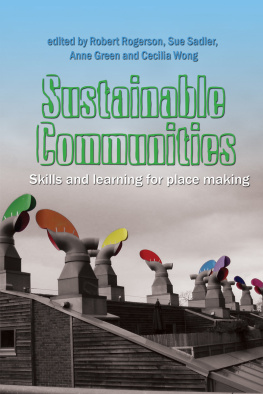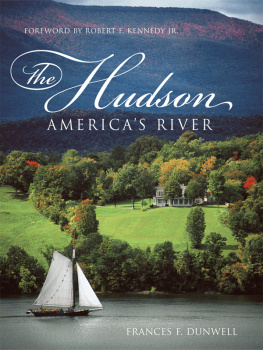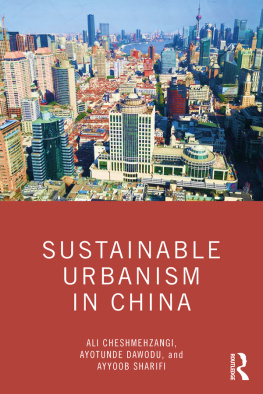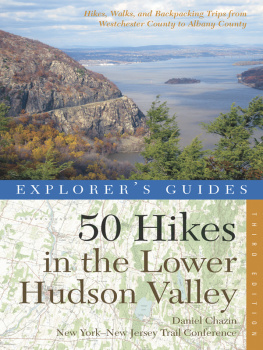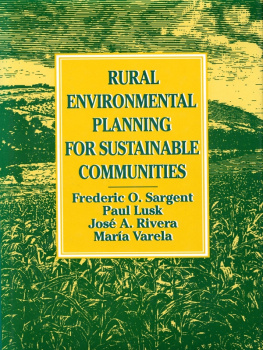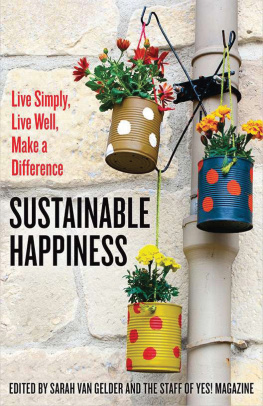Creating Sustainable Communities
Creating Sustainable Communities
Lessons from the Hudson River Region
Rik Scarce
Published by State University of New York Press, Albany
2015 State University of New York
All rights reserved
Printed in the United States of America
No part of this book may be used or reproduced in any manner whatsoever without written permission. No part of this book may be stored in a retrieval system or transmitted in any form or by any means including electronic, electrostatic, magnetic tape, mechanical, photocopying, recording, or otherwise without the prior permission in writing of the publisher.
Excelsior Editions is an imprint of State University of New York Press
For information, contact State University of New York Press, Albany, NY
www.sunypress.edu
Production, Jenn Bennett
Marketing, Anne M. Valentine
Library of Congress Cataloging-in-Publication Data
Scarce, Rik, 1958
Creating sustainable communities : lessons from the Hudson River Region / Rik Scarce.
pages cm
Includes bibliographical references and index.
ISBN 978-1-4384-5643-0 (hardcover : alk. paper)
ISBN 978-1-4384-5642-3 (pbk : alk. paper)
ISBN 978-1-4384-5644-7 (e-book)
1. Hudson River Valley (N.Y. and N.J.)Environmental conditions. 2. Environmental policyHudson River Valley (N.Y. and N.J.) 3. Community developmentHudson River Valley (N.Y. and N.J.) 4. Sustainable developmentHudson River Valley (N.Y. and N.J.) I. Title.
GE155.H83S27 2015 |
338.9747307dc23 | 2014027105 |
10 9 8 7 6 5 4 3 2 1
For Wendy, with whom
I joyfully walk, paddle, and travel
the Hudson regionContents
Illustrations
Figure 1.1. | Hudson River Watershed Map |
Acknowledgments
I am deeply indebted to many for making this book possible. Foremost are the sixty-two folks who sat with me for interviews, fifty-nine of which were filmed for a documentary. Whatever this book is, it was made possible through their generosity of time, wisdom, and experience.
I had the good fortune to work with several wonderful students. In the early years of this project, Megan McAdams and I traveled to New York City and throughout the region looking at old maps and filming scenes; she also was a tremendous help in my grasp of the areas early history. Mary Rynasko and Katarra Peterson spent a summer working on the environmental justice data reported in , and Jessica Aleman picked up that work and completed it with me. As I finished the research, Leah Docktor was an exceptional assistant. To all of them, my heartfelt gratitude.
Skidmore College supported this work in multiple ways. The Faculty Development Committee awarded me grants that made the extensive travel possible, and the Dean of the Facultys office was similarly helpful. The Environmental Studies Program funded four summer collaborative projects with students, above and beyond my highest expectations, and supplied me with the video equipment used for filming the interviews.
Ive always felt fortunate to be on the Skidmore faculty, never more so than as I look back on the ways large and small that my colleagues across campus, particularly in the Department of Sociology, aided this work. Outside of my department, Cathy Gibson thoughtfully reviewed an early draft of , and A. J. Schneller shared comments on a late draft of the entire book.
Finally, my wife, Wendy Scarce, showed me far more forbearance and understanding than I deserved. This project has been with us throughout our marriage, and I know she is as happy as I am to see it fledge.
Figure 1.1. Hudson River Watershed
Introduction
Remaking a RegionIntentionally
[R]emake, so far as humans
can remake, all that humans
have unmade. To you, whoever
you may be, I say: Come,
meaning to stay. Come,
willing to learn what this place,
like no other, will ask of you
and your children, if you mean
to stay.
Wendell Berry, XI
Few settings in American society are home to richer landscapes than the Hudson River region of the Northeast and New England. Here we find formative places in the nations history and in its consciousness: West Point, Sleepy Hollow, Hyde Park, and the World Trade Centerswhich were built on land created by filling the Hudson River. This region is the home of the Mohicans and IBM, the craggy Adirondack Mountains and New York Citys concrete canyons, General Electric and General Benedict Arnolds treason.
Increasingly, it is also the land of sustainability, a watershed like no other in the extent and intensity of efforts residents undertake to create a lasting bioregion.
One of the most studied, storied, painted, pampered, and abused landscapes in North America, the Hudson region has undergone relentless change over the last four centuries. It was a source of immense riches to the Dutch, the regions first European colonists, who exploited it but never truly settled it. To the British who followed, it was a vital northern foothold on the continent, an opportunity to extend their domain and to push back those of their enemies.
And since our nations founding, the Hudson region has been wracked with contradiction and conflict. The same setting that inspired some of our earliest literature and first great works of art, a place that was home and playground to working people and presidents, was savaged beyond recognition for lumber and leather tanning. The river that witnessed the turning point of the American Revolution and the voyage of the worlds first viable steamship became an open sewer. A great city grew to a sprawling megalopolis, overrunning the farmland that made it viable in its early years and outstripping the capacity of the regions remaining farms to feed those who live there. And the aggressive industrialization of the region prompted a national backlash, a reinvigoration of environmentalism that has yet to waneand that today embraces sustainability as its watchword.
Not surprisingly, until the environmentalists came along, few stopped to ask whether it was possible to simultaneously create livable cities, functioning environments, and permanent, workable economies in the Hudson region. Yet today that question is being asked, and answered in the affirmative, not only by avowed greens but many others as well.
This book tells the story of those working to create a region that grows much of its own food, that takes ecology to heart when making land use decisions, and where reinvigorated communities embrace environmental justice. It is a place where transportation systems depend less and less on automobiles, in part because jobs are closer to home and, as a result, our homes become central to living happier, more fulfilling lives. In this emerging Hudson River region, ski resorts produce their own energy, insulation is made from fungi, and children eat the vegetables they grow on the roofs of their schools.
Admittedly, theres a paradox at play here. There is no place, no other rivers drainage, like the narrow strip of land on either side of the Hudson for exemplars of sustainability. Yet the region as a whole remains a long way from sustainable. What makes it special is that so many who call it home are doing so much in such diverse ways to fulfill their vision of lasting, stable communities, economies, and ecosystems. For all the changes theyve brought, theyre only getting started. In the words of sustainability entrepreneur Melissa Everett, What we do here will send a signal and will resonate, I believe, as other places see [whats happening in the Hudson region]. (The Hudson bioregion primarily lies in New York State and includes much of Manhattan and the Bronx in New York City; all or portions of seventeen New York counties; substantial areas of northwestern Massachusetts, northern New Jersey, and southwestern Vermont; and slivers of Connecticut.)


